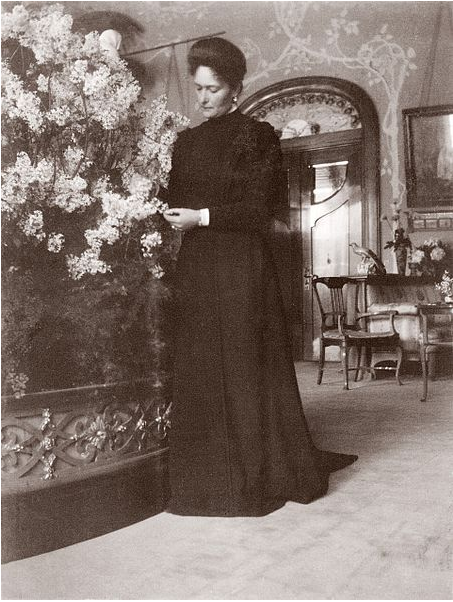Strolling through the neighborhood while being towed behind one energetic terrier to the fore and a slow moving collie to the rear, the most fragrant scent came wafting through the air as we rounded the corner. There by the front walk, a broadly spreading Miss Kim lilac was covered with scented blooms. Many of us have grown up with a fondness for lilacs once encountering their intoxicating flowers.
As we know, it was frequently the heads of state, patrons and academic supporters who provided the means for botanists and plant explorers who combed the world for new specimens. Samples of seeds and cuttings would be sent back to be propagated in state botanical gardens and greenhouses, then popularized among the moneyed set before percolating into general commerce.Botanists found new lilac species in Asia. Syringa vulgaris, the Common Lilac, grows as a native throughout the Balkan states and southeastern Europe. It has the most cultivars and will grow in areas as cold as zone 4. In the 19th and early 20th century, Lemoine Nursery cultivars were extremely popular: President Grevy, Mmme. Lemoine, Congo, Charles Jolie and so on.
Russian monarchs from Peter and Catherine onward had a great fondness for lilacs and had planted parks filled with them in imperial residences in the town of Tsarkoe Selo.
“Scattered in clumps throughout the park were lilacs planted by a dozen empresses. Over the years the shrubs had grown into lush and fragrant jungles. When the spring rain fell the sweet smell of lilacs drenched the air”
Empress Alexandra doted on lilacs and her favorite colors all stemmed from various shades of mauve, which she translated into the famous “Mauve Boudoir.” The room’s upholstered furniture, walls, draperies and portieres were covered with an expensive French opalescent silk to match a lilac sprig given her by her adored husband, Nicholas II.
“Lilacs come in many colors, some have intense fragrance and others are known more for their unique flower form or shade. The Imperial Greenhouses were able to supply lilacs to the palace almost all year. However the most beautiful, lush and fragrant lilacs came from the Imperial park itself, where huge lilac trees sunk under the weight of blossoms in early summer. The scent was overwhelming. In the far north, in Petersburg and Helsinki, lilacs possess an extra vigor and perfume because of the short growing season and long hours of sunlight during the days of the White Nights.
Beginning in April the Imperial gardeners brought branches from lilac trees in the park to the Greenhouses where they forced early blooming, but they didn’t have the size or fragrance of the naturally blooming flowers from the parks. Smaller lilacs, specially grown in pots in the greenhouses were also brought into the palace when they came into bloom. The transportation of potted plants of all types from the greenhouses was an especially dangerous operation. Although the greenhouses were nearby a rare tropical plant – indeed any plant – could freeze during transport in the winter months. To protect the plants as they were moved, special enclosures and heated wagons were created. Dozens of workers were sometimes required to move them.”
The quote above was extracted from this blog article. Read more for additional information :



